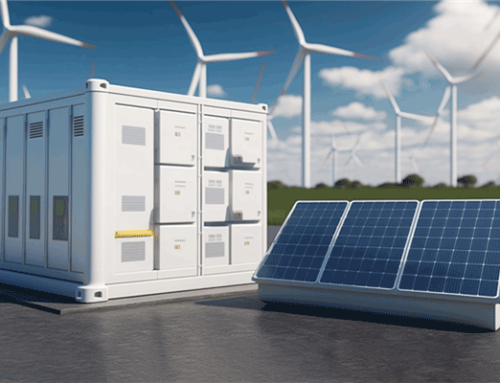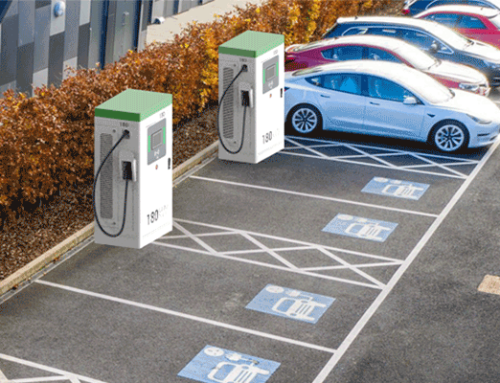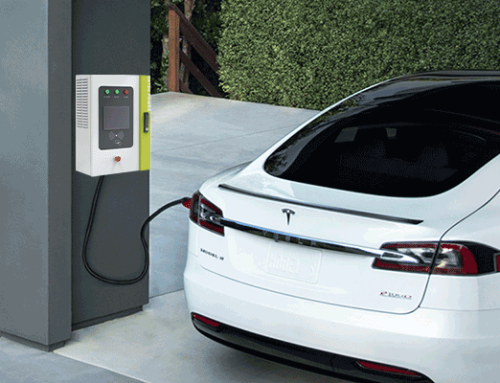What is Autocharge?
Unlike traditional EV charging, Autocharge technology allows a driver to simply connect a charging cable to an EV to start charging — without any additional steps. Autocharge works with most (but not all) EVs that accept a Combined Charging System (CCS) connector and support CCS two-way vehicle-to-charger communications.
Here’s how it works:
- The EV driver goes through a one-time setup with their charging network, filing details about payment and EV identity—Media Access Control (MAC) or Vehicle Identification Number (VIN).
- After the initial set-up, the driver only needs to plug in the EV to start charging without having to authenticate with an RFID or an app.
- AutoCharge automates authentication, authorization, and billing by passing the payment and EV information from the charging station to the charge point management system (CPMS) using the Open Charge Point Protocol (OCPP).

How Autocharge works with OCPP.
Autocharge is way more user-friendly compared to traditional authorisation methods, such as RFID cards and smartphone apps. It also provides better data security than RFID technology like MIFARE Classic. Since MAC addresses aren’t easily replicated (unlike RFID cards).
Autocharge is also (relatively) simple to implement. No backend IT system changes are required since Autocharge is compatible with OCPP 1.5 and higher. It also functions with all existing and future CCS vehicles on the market that utilise unique MAC addresses.
What are the benefits of Autocharge?
- It offers a very user-friendly, seamless charging experience for EV drivers that is even more convenient than fueling an internal combustion engine (ICE) vehicle
- It is very simple to implement, particularly for EV charging networks that use OCPP-compliant charging stations and charging management software
- It works with both new and old EVs that use CCS charging connectors
- Network providers and vehicle manufacturers can adapt Autocharge technology easily to meet their own security requirements or offer differentiating features to attract EV drivers
What are the disadvantages of Autocharge?
The biggest concern that many people have with autocharge is the use of MAC addresses or Vehicle Identification Numbers (VINs) for authorisation during the charging and billing process.
Whenever a car connects to an Autocharge-enabled station, its identifier is stored on a whitelist. Each EV needs to have a unique identifier so we can assign a billing account to this vehicle. Every time a driver charges, the EV sends its identifier to a charging station when plugged in. This means it is leaving valuable data vulnerable across multiple machines. Not the best idea for data security.
This is why major car OEMs like Volkswagen don’t support Autocharge. They have to protect your data and are unwilling to take any chances.
While some argue that MAC addresses aren’t personal data because they are not linked to individuals, the European Commission (EC) begs to differ. According to the EC’s article 29 data protection working party, MAC addresses are personal data, even if you implement security measures like hashing. Those seemingly harmless strings of numbers hold more significance than you might think.
The risk of MAC spoofing
MAC addresses come with another downside, too: They’re vulnerable to spoofing. Hackers can manipulate the MAC address from your EV to the charger, from the charger to the charging station management system (CSMS), or even from the CSMS to the Mobility Service Provider.
The result? Your charging information can be intercepted and used by someone else. That lets them use your details to charge.
Sure, you might argue that the risk of MAC spoofing is low, and the financial consequences might not be significant. However, with Autocharge predominantly deployed at DC fast charging stations, the energy consumed and the resulting cost add up.
And while some suggest using push notifications on your network operator’s or MSP’s app as a form of two-factor authentication to detect unauthorised usage, it begs the question: Shouldn’t Autocharge provide a worry-free, zero-touch charging experience without the need for additional precautions?
Another pitfall with Autocharge arises when renting a car. It’s normal for people to forget to deactivate Autocharge after returning the vehicle. If this oversight goes unnoticed, charges can accumulate, leading these users to reach out to the billing department in hopes of rectifying the situation and securing a much-needed refund.
AutoCharge vs. Plug and Charge
While Autocharge offers the same customer-friendly, seamless user experience as Plug & Charge, another EV industry approach to simplifying the charging experience, the underlying technologies are different. Plug & Charge uses the ISO 15118 protocol specifications, digital signatures, and public key infrastructures to secure communications between the vehicle and the charging infrastructure. While this approach offers more stringent security, it is far more complex, costly, and time consuming to implement. It also requires vehicle and charger manufacturers to support ISO 15118.














